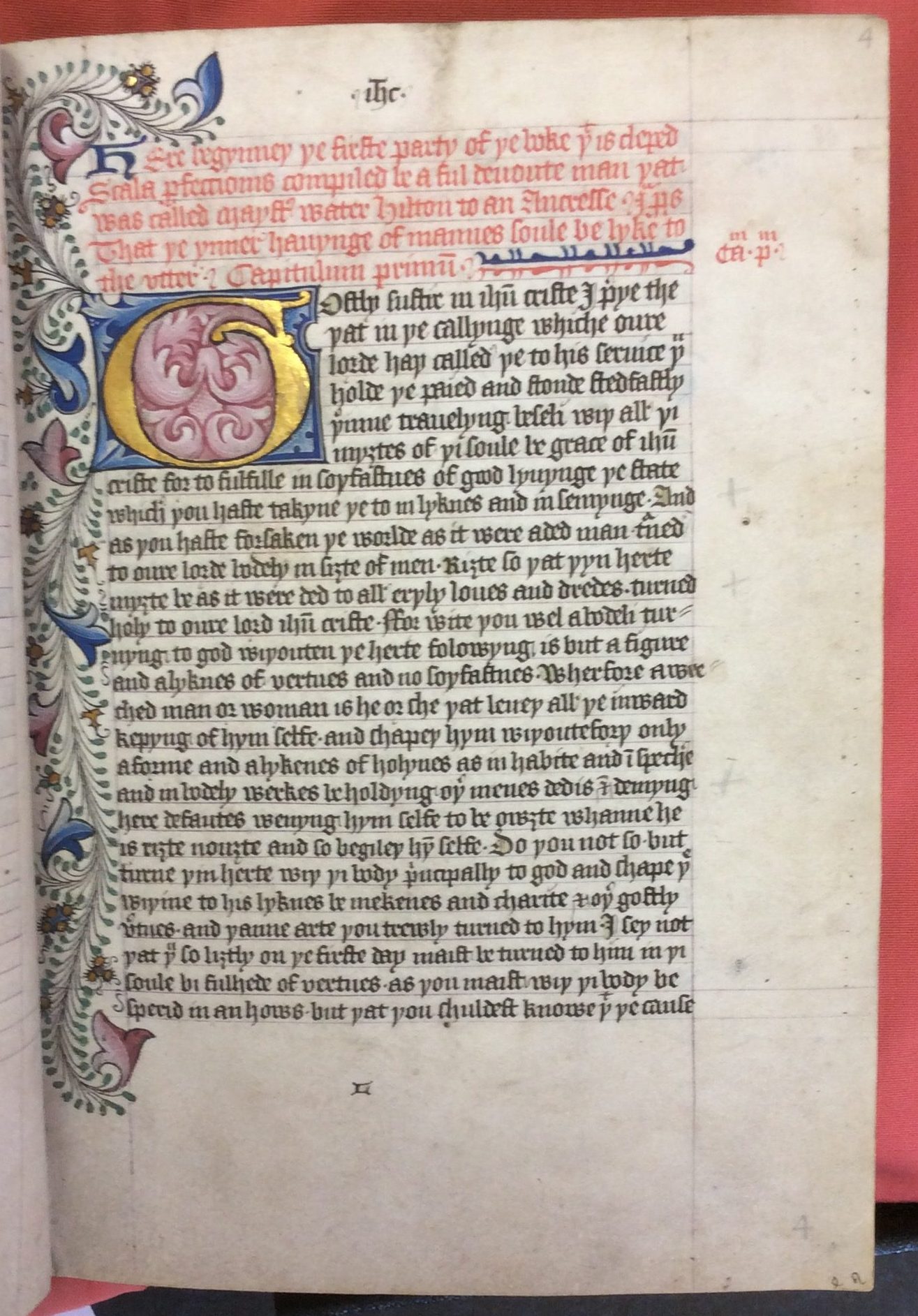Cambridge, University Library, MS Ff. 5. 35 contains The Travels of Sir John Mandeville and Piers Plowman. Both works were copied by a single scribe, and are relatively uniform in terms of layout, decoration, abbreviation, and use of catchwords. These two texts are also found in close proximity in several other manuscripts (Cambridge University Library Dd. 1. 17 and San Marino, Calif., Huntington Library MS HM 114), suggesting that despite differences in genre, form and style, the combination was a somewhat popular and apparently logical one for medieval audiences.
This manuscript features two separate sets of quire markings: a series of quire numbers, likely made by a later binder, loosely resembling Roman numerals; and a series of leaf signatures, apparently scribal, visible on the bottom outer corner of the recto of the first folios of many quires, consisting of a letter marking the quire number and a Roman numeral indicating the number of the folio within that quire. Continue reading

